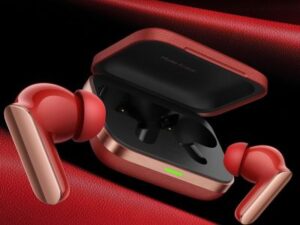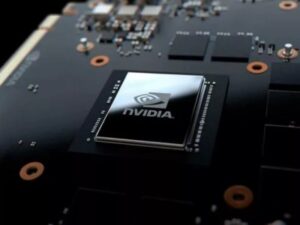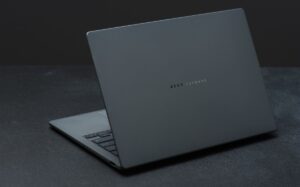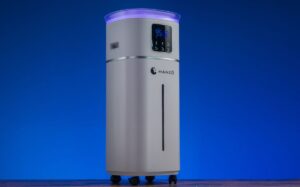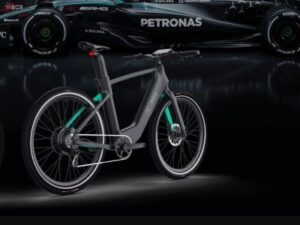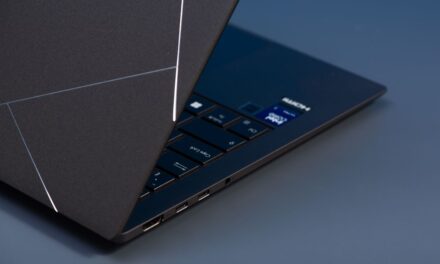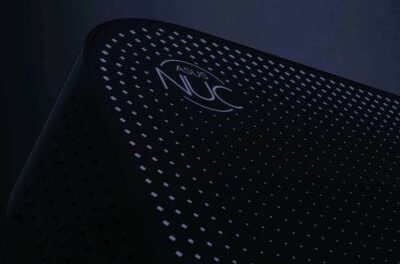ASUS Zenbook A14
Unload. Unplugged. Unlimited.
Get bigger things done with a lighter design! At just under a kilogram, it is born to go places. Its Snapdragon® X Series processor unleashes the full benefits of Copilot+ and empowers your lifestyle with multi-working-day battery life. The all-new minimalist design, featuring tone-on-tone colors and nature-inspired materials, exudes elegance. The laptop lid, keyboard frame, and base are crafted from Ceraluminum™, our amazing anti-wear, anti-scratch and smudge-free material.
Every year, ARM laptops on Windows are gradually evolving software developers are slowly but surely optimizing software, solutions based on Advanced RISC architecture clearly demonstrate modern AI capabilities, and the pure computing power of single-chip systems is growing. Of course, in terms of price and features, such gadgets have not yet caught up with competitors on the usual x86. But they already allow you to comfortably solve almost any office tasks, work with visual content at a basic level, and even run Cyberpunk 2077.
Ultra-light and rugged
The hero of the review belongs to the line of premium Ultrabook’s. But even the most expensive gadgets are subject to wear and tear, and elegant design minimalism, stained and shabby by frequent use, eventually turns into the facelessness of a tired device. And ASUS engineers have brilliantly foreseen this nuance: the case of the ASUS Zenbook A14 is made of an innovative material. Ceraluminum, according to the manufacturer, combines the best properties of ceramics and aluminum and provides increased resistance to scratches and fingerprints – even intensive use will not spoil the appearance.
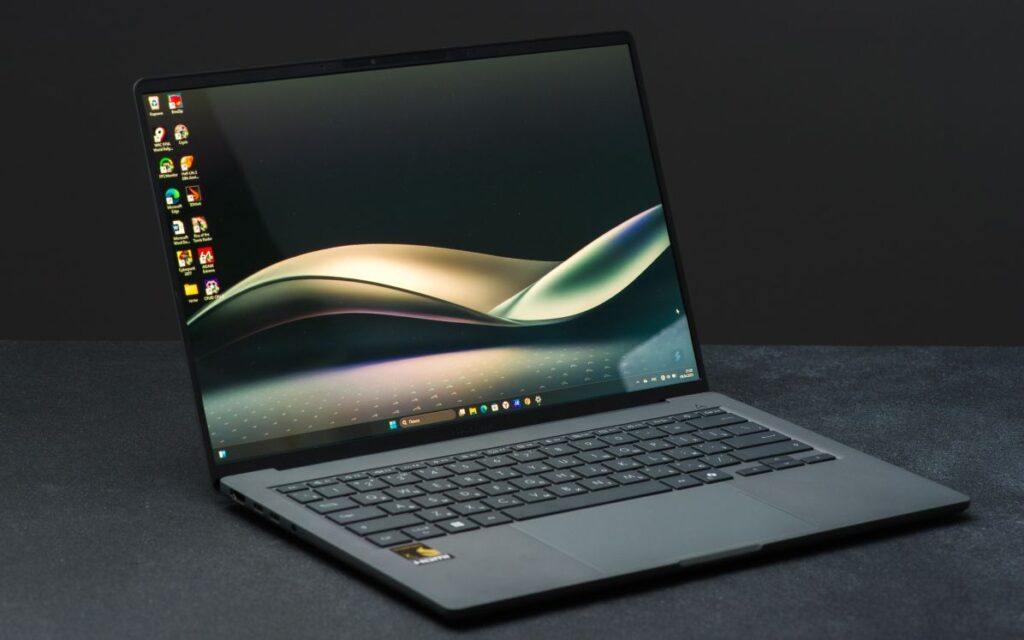
Additional protection is also claimed, corresponding to the military standard MIL-STD 810H. This means that the device is able to withstand falls and work in extreme conditions.
The ASUS Zenbook A14 feels pleasant and unusual: it seems that the laptop is made of metallic matte porcelain. For almost two weeks of home use, the laptop was covered with only small prints. They are easily eliminated with a cloth or microfiber. There are no questions about the quality of assembly, nothing creaks, however, when closed, the lid slightly bends when pressed. The laptop opens with one finger effortlessly.
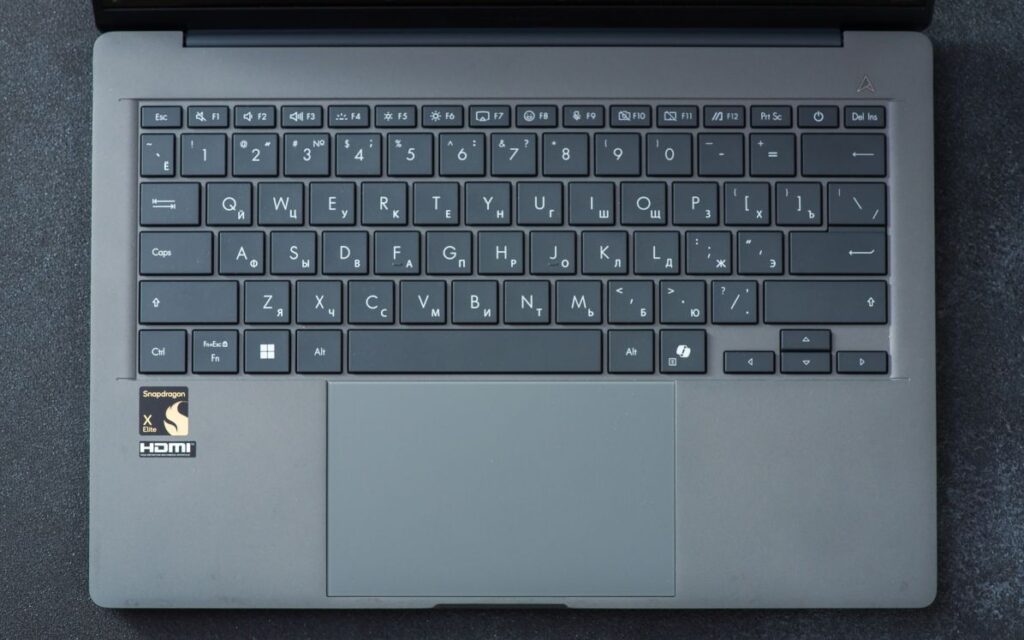
The gray keyboard is devoid of a numeric keypad, which is due to the dimensions of the model. Three levels of monochrome backlight allow you to print comfortably in the dark. The touchpad, in addition to standard gestures, supports ASUS branded features – it is convenient that with a slight movement of your finger you can quickly adjust the brightness and volume, without spending extra seconds looking for the right buttons.
On the right side there is one USB-A 3.2 connector that supports data transfer speeds up to 10 Gbps. On the left is HDMI 2.1, two USB-C 4.0 (40 Gbps) ports for data exchange and replenishment, as well as a standard 3.5 mm audio jack. There are no other slots. Among the wireless interfaces, the ultra-high-speed Wi-Fi 7 module deserves special attention.
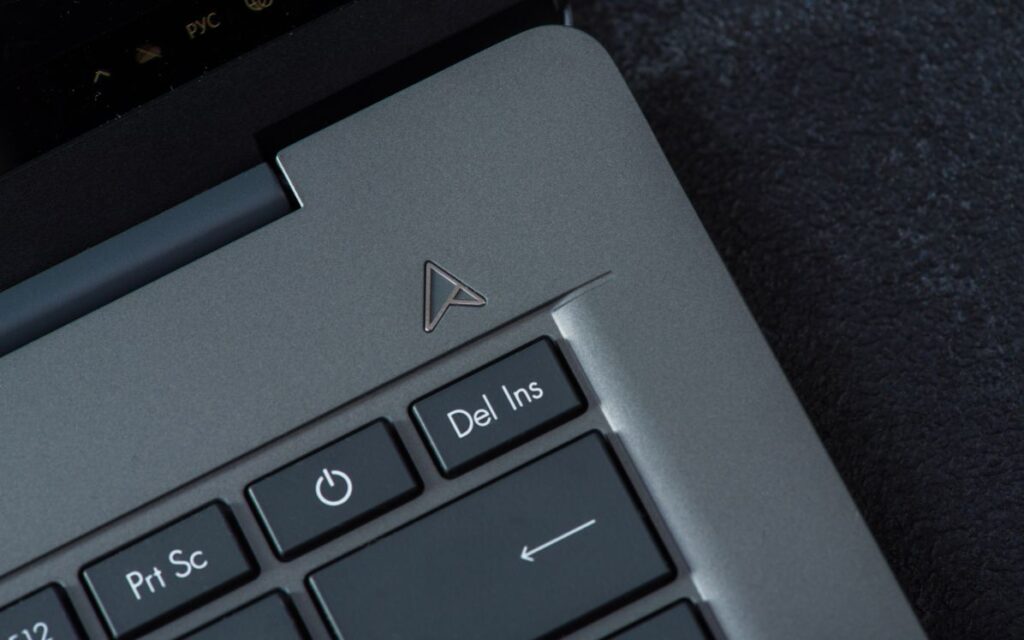
But what is really disarming is the amazing lightness of the device and the size comparable to a sheet of A4 paper. At the same time, an impressive computing power was placed in a modest 980-gram device. A nimble baby will cope with many resource-intensive tasks and will not weigh down your luggage too much if you decide to take it on a trip.
You’re in the ARM now
The filling of the ASUS Zenbook A14 corresponds to the top segment. The laptop is equipped with a Snapdragon X Elite X1E-78-100 processor, 12 cores and 12 threads of which operate at a frequency of up to 3.4 GHz. The chip integrates the Qualcomm AI Engine neuroprocessor, which provides high efficiency when interacting with AI. The declared performance of the dedicated neural unit is 45 TOPS. Another 30 TOPS is added by the processor itself on standard cores. The Adreno X1-85 video accelerator, which has 1536 stream processors, is responsible for the graphics. The power consumption of the system specified by the vendor is 45 watts. There is also a lot of RAM – 32 GB of LDDR5X memory, which demonstrates mind-blowing frequencies (8533 MHz). An upgrade on single-chip systems, alas, is not provided. A lightning-fast PCIe 4.0 SSD per terabyte is installed; read speeds of up to 7 GB/s and write speeds of up to 5 GB/s.
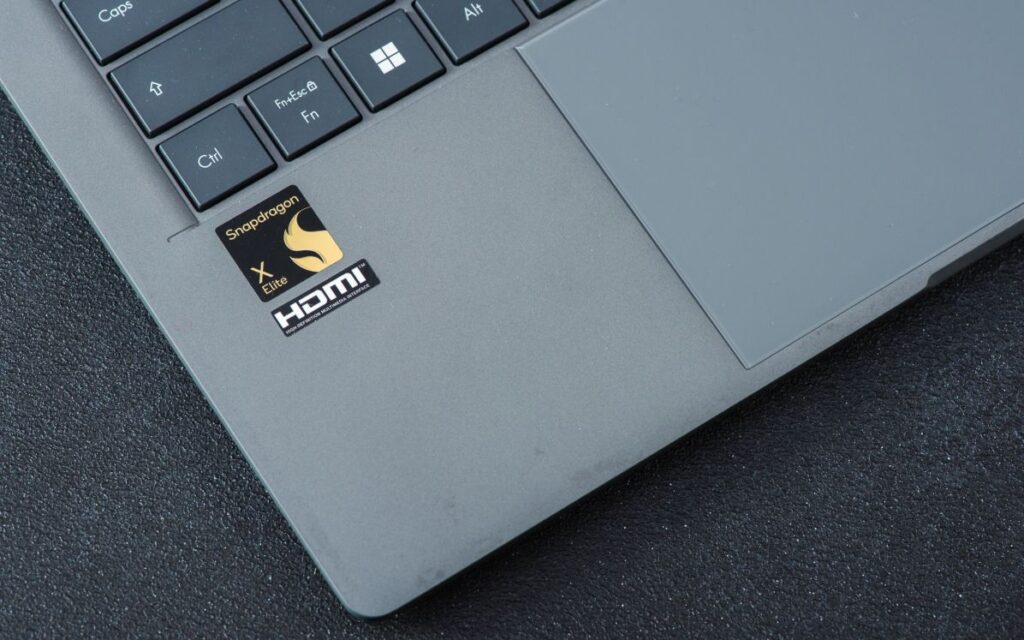
The capabilities of artificial intelligence are represented by Microsoft’s smart companion Copilot (by the way, a separate button on the keyboard is dedicated to it). The assistant can be used for voice control, content generation, scheduling, and information analysis. In addition, starting this year, Copilot interacts with standard Microsoft 365 applications. That is, it is able to facilitate work with presentations or make a graph for an Excel spreadsheet. The AI kit is complemented by ASUS-exclusive features. These include intelligent microphone noise reduction, adaptive screen dimming and eye tracking, as well as useful options for organizing your media library files.
Up to 32 hours of video playback and almost 20 hours of browsing in the browser with a battery capacity of 70 Wh are claimed. The kit includes a 90W charging box. Watching a two-hour video in Full HD via Wi-Fi at 50 percent brightness used up only 9% of the charge. You practically do not remember about the outlet when working at the device, and if something happens, you can recharge the battery using a power bank via Type-C.
The Limits of RISC
The ASUS Zenbook A14 is one of the most powerful Windows laptops with Advanced RISC architecture at the moment. The computing resources of the Snapdragon X Elite X1E-78-100 are enough for demanding programs… If, of course, they manage to launch them. The problem of adapting many applications for ARM is still acute, despite the obvious progress and gradual optimization of the software. As for the basic scenarios, the novelty has no difficulties with them: the browser with a dozen tabs does not slow down, the office suite from Microsoft functions flawlessly, and it is a pleasure to watch photos and movies on the screen with realistic color reproduction. But we’re interested in something more serious, aren’t we? When you buy a device that costs as much as a mediocre gaming laptop or a top-of-the-line business book on x86, you want to get at least as many features.
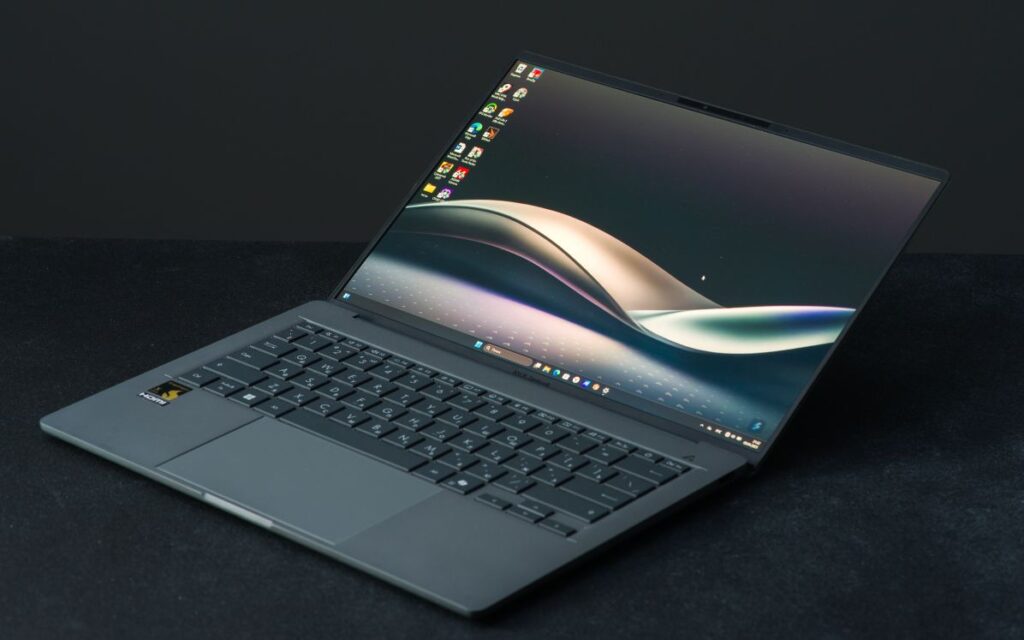
Of course, this ultrabook is not positioned as a game and is aimed at the implementation of business tasks: work for a long time, wake up quickly, solve a full range of tasks based on documents, presentations, simple operations with 2D and 3D graphics. However, modern solutions with integrated graphics, using the more familiar CISC architecture, already allow you to hack into actual games, albeit at minimal graphics settings. The ASUS Zenbook A14, despite its imperfect compatibility with a lot of software, tries its best to hold up well.
In a real game, the average hovers around 31 fps. In Rise of the Tomb Raider, the low settings allow you to get 40 fps. In the WRC 9 rally, after a few runs, the frame rate was 37 fps, but here we raised the settings to medium. On the other hand, some of the more or less modern AAA hits simply did not launch. But the field for adaptation is no longer as endless as it was just a couple of years ago on ARM laptops.
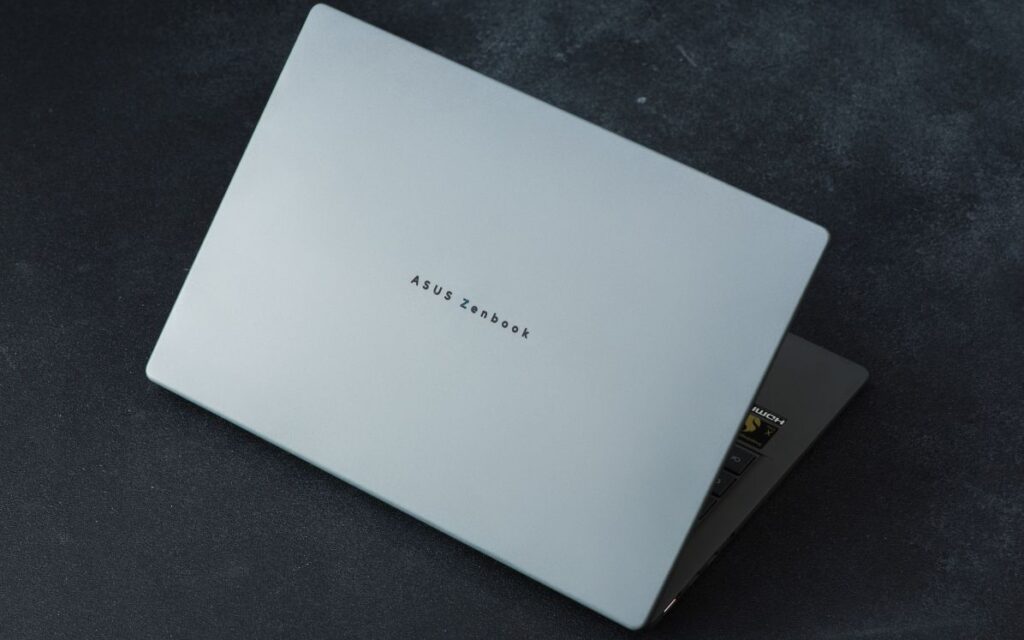
When Apple introduced the first MacBook Air powered by its own M1 processor, the emerging ARM solutions on Windows were conventionally divided into two types — lagging and especially lagging behind. Now we can safely state that devices that claim to be catching up have entered the market. Apparently, this is just the beginning: laptops with single-chip systems increase computing power while maintaining the key advantages of Advanced RISC architecture.
The ASUS Zenbook A14 is an extremely weightless and power-hungry ultrabook. In a sense, this is a cutting-edge product, but it cannot be called revolutionary. On the contrary, we are witnessing a firm and consistent step towards the development of single-chip systems in laptops. The number of supported applications is growing, the functionality is noticeably expanding, and x86 analogues no longer look like something prohibitively distant. However, for gamers, professional video editors, CAD engineers, and those who work with software that has strict compatibility requirements, it makes no sense to overpay and leave x86.



